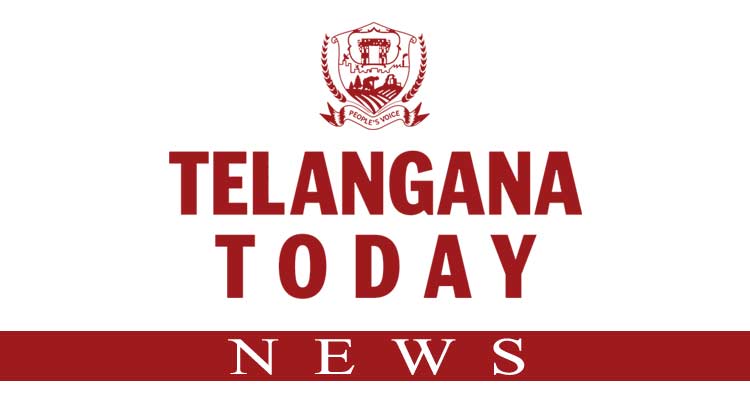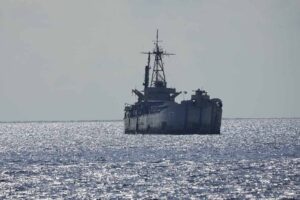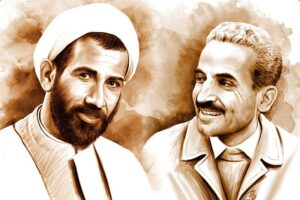The finalists will attend the Thermo Fisher JIC Finals Week in Washington next month, where they will compete for more than USD 100,000 in awards, including the top USD 25,000 Thermo Fisher Scientific ASCEND (Aspiring Scientists Cultivating Exciting New Discoveries) Award.
Updated On – 10:01 PM, Sun – 24 September 23

The finalists will attend the Thermo Fisher JIC Finals Week in Washington next month, where they will compete for more than USD 100,000 in awards, including the top USD 25,000 Thermo Fisher Scientific ASCEND (Aspiring Scientists Cultivating Exciting New Discoveries) Award.
Houston: A total of Sixteen Indian American students are among the finalists in the country’s premier middle school science, technology, engineering and mathematics (STEM) competition.
The name of the challenge is ‘Thermo Fisher Scientific Junior Innovators Challenge (Thermo Fisher JIC).’ The 30 finalists were selected by a nationwide panel of scientists, engineers and educators from a pool of top 300 Junior Innovators announced earlier this month, the Society for Science announced on September 20.
They will attend the finals week in Washington, D.C., next month, “where a panel of judges will evaluate their scientific research and their communication, creativity and collaboration skills during team challenges.” The finalists will attend the Thermo Fisher JIC Finals Week in Washington next month, where they will compete for more than USD 100,000 in awards, including the top USD 25,000 Thermo Fisher Scientific ASCEND (Aspiring Scientists Cultivating Exciting New Discoveries) Award.
The Indian American finalist, majority of whom are from Texas, California, Georgia and one each from Washington, Illionois, Alabama and Florida.
The finalists will attend the Thermo Fisher JIC Finals Week in Washington next month, where they will compete for more than USD 100,000 in awards, including the top USD 25,000 Thermo Fisher Scientific ASCEND (Aspiring Scientists Cultivating Exciting New Discoveries) Award.
The Indian American finalists are Inika Adapala, from California (Communication App for Patients With Locked-in Syndrome), Advait Badrish, from Washington (HeartNN: A High-Accuracy Neural Network for Cardiac Auscultation), Krishna Bhatt, from California (A Novel Wearable for Active Prevention of Falls Through GRU-Based Gyroscopic Inference and Center of Mass Manipulation).
Adyant Bhavsar, from California (From Waste to Wattage: Converting Wasted Mechanical Energy Into Electricity Through Triboelectrification and Electrostatic Induction), Pranavi Chatrathi, from Texas (Side Impact Car Crash: An External Airbag To Reduce Injury Severity Through Reduction in B. Pillar Intrusion), Sharanya Munjal Chudgar, from California (Solar-Tracking Litterminator), Maya Gandhi, from California (Optimising Plant Microbial Fuel Cell Energy Output: The Effect of Anodic Substance and Configuration).
Shanaya Gill, from California (Prevention of Casualties and Property Damage Using Thermal Imaging and Software-Based Occupancy Detection), Akshadha Mehta, from Georgia (FAP-BRIX: A Practical Solution To Lessen Plastic Pollution), Kinnoree Rabeya Pasha, from California (Analyse the Effects of Soil Management Practice on Water Holding Capacity of Soil To Reduce Water Application and Increase Crop Yield Using Precision Agriculture technology), Maan Mamta-Sanjay Patel, from Texas (Nature’s Super Shapes: How Voronoi Tessellations Affect Structural Strength).
Nikita Prabhakar, from Alabama (A Non-Invasive Integrated Sensor for Monitoring Menorrhagia), Amritha Praveen, from Illinois (Improving Mental Health Using Artificial Intelligence-Powered Music Therapy), Aswath Rajesh, from Florida (Ecofriendly Polymeric Material: Paving the Way for Circular Bio-Economy), Keshvee Sekhda, from Georgia (IdentiCan: The App That Detects Breast, Lung and Skin Cancer) and Rayyan Yaqoob, from Texas (The Effect of Targeting Multiple Neural Pathways Using Nutraceuticals on the Cognition of Drosophila Melanogaster: A Novel Multi-Target Approach Using Curcumin, Magnesium, and Coenzyme Q10).
“I applaud the top 30 Thermo Fisher Scientific Junior Innovator Challenge finalists! I look forward to meeting them in Washington, D.C.,” said Maya Ajmera, President & CEO of the Society for Science and Executive Publisher of Science News. “These young people are truly inspiring, with many of them seeking to solve problems within their own communities. They give me hope for the future.”





